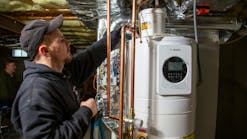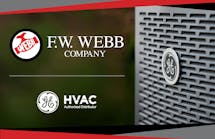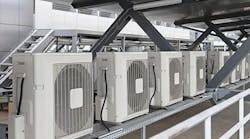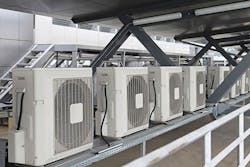The HVACR industry has always been a male-dominated profession. In fact, when I first joined this line of business in the late 1980s, I’d say 98 percent of my co-workers were male. Today, in my workplace, we have more women than ever in management positions, but that’s not exactly the case with those who do hands-on work in the field.
The U.S. Bureau of Labor Statistics (BLS) reported only 1.2 percent of women work as mechanics and installers in the heating, air conditioning and refrigeration field. In another BLS report, the same occupation has a projected growth of 34 percent, making it one of the top 29 anticipated in-demand and higher-paying jobs between 2010 and 2020.
With that kind of expected growth, now might be a perfect time for women to join the industry. I admit, it can be challenging, but it can also create a great opportunity to stand out and shine.
What can women offer HVACR industry?
This industry is a great place for people who are great problem solvers, creative thinkers and communicators. All these traits can change the way products are designed, how technical manuals are written to make them more understandable to the masses and how relationships are formed with the community.
According to Nielsen, women are also key decision makers when it comes to influencing or managing big-ticket items, including appliances. That experience can truly help them become leaders and advocates in what is needed and wanted by consumers, including how quiet the equipment is, how it will fit in the home and what features can be added to make the homeowner experience more intuitive. Women also recognize and appreciate green issues, which can have a huge impact on guiding manufacturers to make products that save money and energy.
What makes the industry appealing?
First and foremost, demand makes the industry appealing. There’s a nationwide need for heating and air conditioning mechanics and installers. MyNextMove.org, a partner of the American Job Center Network, shows at least eight states, mostly along the east coast, with a high demand for HVAC technicians. Thirty-one states have average opportunities and only 11 states have below average opportunities.
Money also makes the industry appealing. Women can make more money in a technically driven trade, like HVACR and water heating, compared to other careers. The Office of Science and Technology Policy, in collaboration with the White House Council on Women and Girls, reports women employed in a STEM (science, technology, engineering, and mathematics) job not only earn 33 percent more than those in non-STEM occupations, but the wage gap is smaller when compared to men. Right off the bat, women in STEM careers have a better chance of economic success and equality.
The industry offers stability and job security too. Homeowners and business owners are always going to need qualified technicians and contractors to repair heating, cooling, water heating and refrigeration equipment — not many people will go without cool air, heat, hot water or refrigeration. Plus, this job can’t be outsourced to machines, and, like teachers or nurses, you can find a job in this field anywhere you move.
More women are joining the technical workforce than ever before because in today’s society, women aren’t shying away from technical issues and it’s no longer a huge road block to success. A few years ago, the U.S. Census Bureau reported a rise in women getting STEM jobs, including social scientists, mathematical workers and engineers.
Even though HVACR and water heating equipment is more complex than 20 years ago, there’s a plethora of information on the go with online videos and articles. There are also cell phone apps available that can help diagnose what’s wrong with a unit.
Most women also crave professional mentors. From my experience, the industry has provided that outlet to me. The women in this field have been extremely supportive of one another, which can be important to those learning the trade.
Succeeding in the industry
Simply put, be a champion for the industry. Take time to meet with manufacturers to learn about the products your company sells — that may mean visiting labs to shadow technicians. Throughout my career, I spent a lot of time in our labs learning about the functionality of HVAC and water heating systems. Having this first-hand expertise has paid off greatly.
Also, go out in the field and do ride-alongs with contractors. Find out what attracts contractors to buy certain products and not others. You’ll need good understanding at all times about what makes contractors want to work with certain distributors and products.
As a knowledgeable subject matter expert (SME) on products and customer’s needs, a woman can use that information to assert herself within the company to help guide business decisions, which will be critical in being noticed as an asset to the company. Characteristics like professionalism, integrity and product expertise go a long way in our industry.
In the past, I’ve had struggles at times with lack of acceptance in this male-dominated industry, but those challenges have only made me stronger. So, the big question of this article is … why should a woman join the HVACR force? I say – why not?
A woman can bring a different perspective to the table, which could make a difference in the way we use household appliances and possibly improve quality of life across the nation.
Karen Meyers is Rheem’s vice president of government affairs. As vice president of government affairs, she serves as Rheem’s registered federal lobbyist, which involves managing Rheem’s Washington, D.C., lobbying firm. She also supervises Rheem’s state and local lobbying activities, arranges for elected officials to visit Rheem’s U.S. plants, and works to have key legislation passed to support the company’s business objectives.










